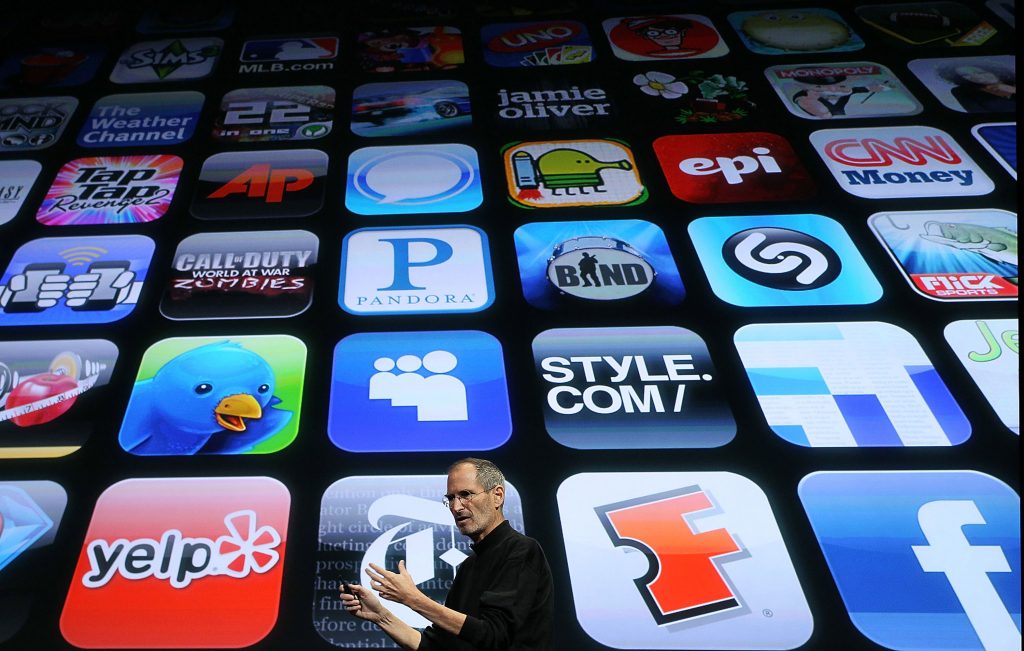
The success secrets of Steve Jobs. The mindset, philosophy and simple success strategies Steve Jobs used to create insanely great companies and the life and lifestyle most people only dream of.
What you can learn from it, so you can reach your full potential and accomplish your grandest goals and dreams. It covers his early life, what led to the creation of Apple Computer and his phenomenal successes at such an early age. What we can learn from some of his greatest challenges, setbacks, comebacks, successes and legacy.

Steve Jobs was a trailblazer of technology and arguably the preeminent visionary of the 20th century. Driven by a passion for great technology and an uncanny ability to foresee what people wanted, he brought technology to the masses and unlocked the creativity of a generation. Focused on the space where the humanities and sciences meet, his mantra of “simplicity is the ultimate sophistication” drove him to revolutionize personal computers, animated movies, music and telephones.
“That’s been one of my mantras—focus and simplicity. Simple can be harder than complex; you have to work hard to get your thinking clean to make it simple.” ~ Steve Jobs
Adopted as an infant, Steve Jobs was bullied in middle school, dropped out of college and forced out of the company he founded. He could have been a failure. Instead, he became a rock star of technology and icon of innovation.
The secrets to his success included an unbounded imagination and an almost magical genius. But, perhaps his greatest asset was his “reality distortion field,” a term coined by a colleague working on the Apple McIntosh computer. It referred to a Star Trek episode where the aliens could create their own world through the sheer power of their minds. Steve Jobs had a similar quality that allowed him to convince himself and his colleagues that they could accomplish anything.
“The people who are crazy enough to think they can change the world are the ones who do.” ~ Apple Creative Team, 1997 “Think Different” Ad Campaign
When Jobs said “we are inventing the future”, he meant it. But he also knew innovators had to be able to overcome multiple failures. Much like America’s other great innovator, Thomas Edison, Jobs thought failure was just succeeding in proving what doesn’t work, and that once you eliminate what doesn’t work, you will find what does. It was this recognition coupled with his overwhelming determination that enabled him to move past the obstacles and failures he confronted along the way.
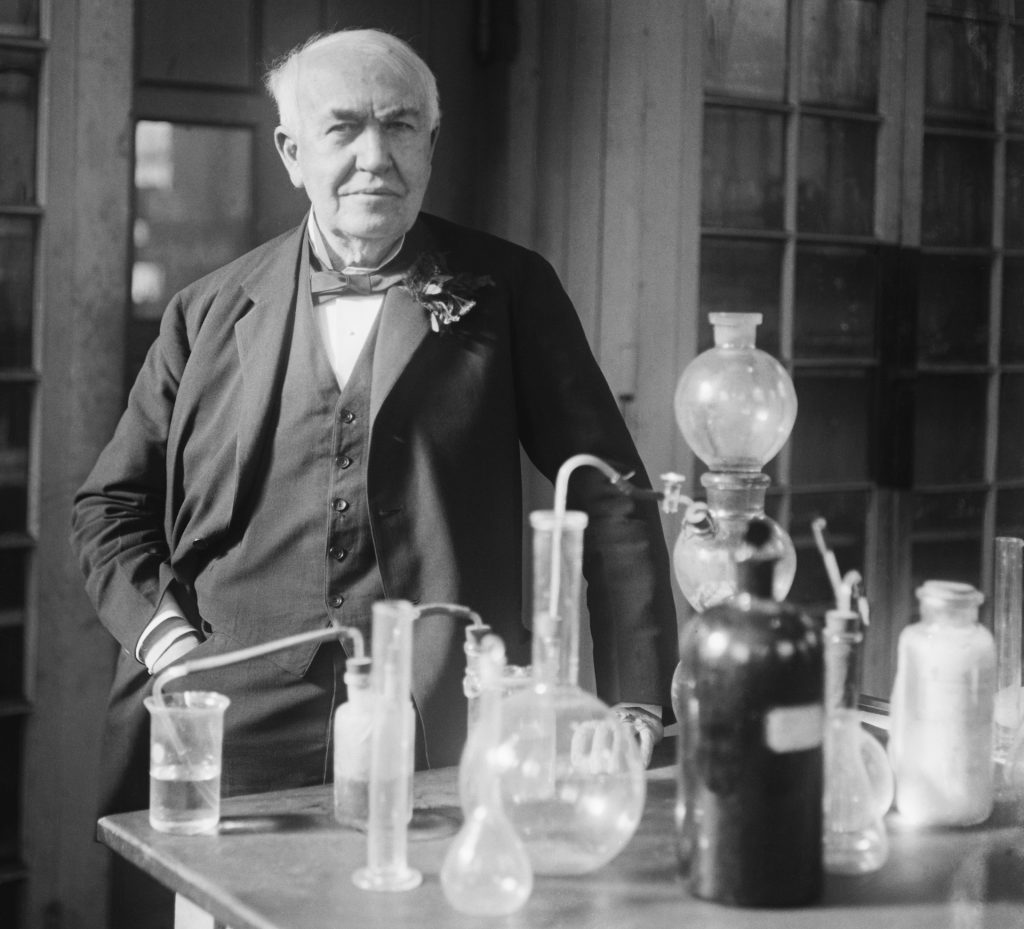
In a 1921 magazine interview, Edison explained how he dealt with failure, “I cheerily assured him that we had learned something. For we had learned for a certainty that the thing couldn’t be done that way, and that we would have to try some other way. We sometimes learn a lot from our failures if we have put into the effort the best thought and work we are capable of.”
Jobs’ first challenge in life was to overcome the stigma of adoption. His biological parents were a Syrian graduate student and American woman who met at the University of Wisconsin. Because his mother was Catholic and her father opposed her marrying a Muslim, she had Steve in secret and gave him up for adoption. Jobs’ adoptive parents reassured him at an early age that he wasn’t abandoned, but was special — and that they actually chose him. As a result, he didn’t suffer the insecurities many adopted children do.
“Knowing I was adopted may have made me feel more independent, but I have never felt abandoned. I’ve always felt special. My parents made me feel special.” ~ Steve Jobs
By the time he was 10, Jobs was a loner who didn’t respect authority and wasn’t challenged academically. He didn’t care about school until his 4th grade teacher figured out how to motivate him with bribes.
“One of the saints in my life is this woman named Imogene Hill, who was a fourth-grade teacher who taught this advanced class. She got hip to my whole situation in about a month and kindled a passion in me for learning things. I learned more that year than I think I learned in any year in school.” ~ Steve Jobs
With a new found interest in school work, Jobs excelled, skipping 5th grade and starting middle school early. Now he faced his next challenge — being bullied because he was smarter than other kids.
Instead of suffering in silence, he persuaded his parents to move to a better school district. There he attended Silicon Valley’s Homestead high school where he met Steve Wozniak — better known as “Woz” — and bonded over a shared love of practical jokes and technology.
In 1970, Jobs was drawn to the counterculture, inspired by the music of Bob Dylan and the Beatles. He smoked pot for the first time and had a free-spirited girlfriend, who turned him on to the art and literature that would later give him a sense for great design.

According to Walter Isaacson’s biography, “Steve Jobs,” one of his high school classmates described him as: “kind of a brain and kind of a hippie … but he never fit into either group. He was smart enough to be a nerd, but wasn’t nerdy. And he was too intellectual for the hippies, who just wanted to get wasted all the time. He was kind of an outsider. In high school everything revolved around what group you were in, and if you weren’t in a carefully defined group, you weren’t anybody. He was an individual, in a world where individuality was suspect.”
It would be a 1971 collaboration with Woz while Jobs was a senior in high school that planted the seed for Apple. Together, they designed and built “Blue Boxes” that could duplicate the tones that routed calls on the long distance phone network — allowing people to get free long distance calls. The Blue Box taught them they could work together, solve technical problems and actually produce something.
“And these were illegal I have to add, but in spite of that, we were so fascinated by them that Woz and I figured out how to build one. We built the best one in the world; the first digital blue box in the world. We would give them to our friends and use them ourselves. And you know, you rapidly run out of people you want to call. But it was the magic that two teenagers could build this box for $100 worth of parts and control 100’s of billions of dollars of infrastructure in the entire telephone network in the whole world… Experiences like that taught us the power of ideas. The power of understanding that if you could build this box, you could control 100’s of billions of dollars around the world, that’s a powerful thing. If we wouldn’t have made blue boxes, there would have been no Apple.” ~ Steve Jobs, 1994 Interview with the Silicon Valley Historical Association
After graduating high school, Jobs attended Reed College in Oregon but quickly dropped out because he didn’t want to spend his parents’ savings. He hung around for 18 months, monitoring classes that interested him, sleeping on friends’ floors, returning coke bottles for food money and getting free meals at the local Hare Krishna temple. Jobs reflected that much of what he stumbled into following his curiosity proved to be priceless later on.
“If I had never dropped in on that single calligraphy course in college, the Mac would have never had multiple typefaces or proportionally spaced fonts.” ~ Steve Jobs

In 1973, Jobs returned to the San Francisco bay area, got a job as a game designer at Atari and started saving money for a trip to India. He was seeking spiritual enlightenment and became a practitioner of Zen Buddhism to better understand the relationship of things in the world. He took Timothy Leary’s advice, to “turn on, tune in and drop out” and experimented with psychedelics.
“Taking LSD was a profound experience, one of the most important things in my life. LSD shows you that there’s another side to the coin, and you can’t remember it when it wears off, but you know it. It reinforced my sense of what was important—creating great things instead of making money, putting things back into the stream of history and of human consciousness as much as I could.” ~ Steve Jobs
In 1975, Jobs and Woz teamed up again, setting out to build the first Apple computer in Jobs’ garage. They wanted to make something they both wanted themselves — a stand alone desktop computer with the keyboard, screen and computer all integrated into one. At the time, computers consisted of a mainframe with individual user terminals. Their vision was to build a self-contained machine that could be used by a single person.
When the prototype was done , they showed it off at the Homebrew Computer club, a group of computer hobbyists in Silicon Valley, where it had an enthusiastic reception. Woz wanted to give it away, but Jobs convinced him they should sell it. The result was Apple Computer, named after an Oregon hippie commune where Jobs had once spent time working in the apple orchard.
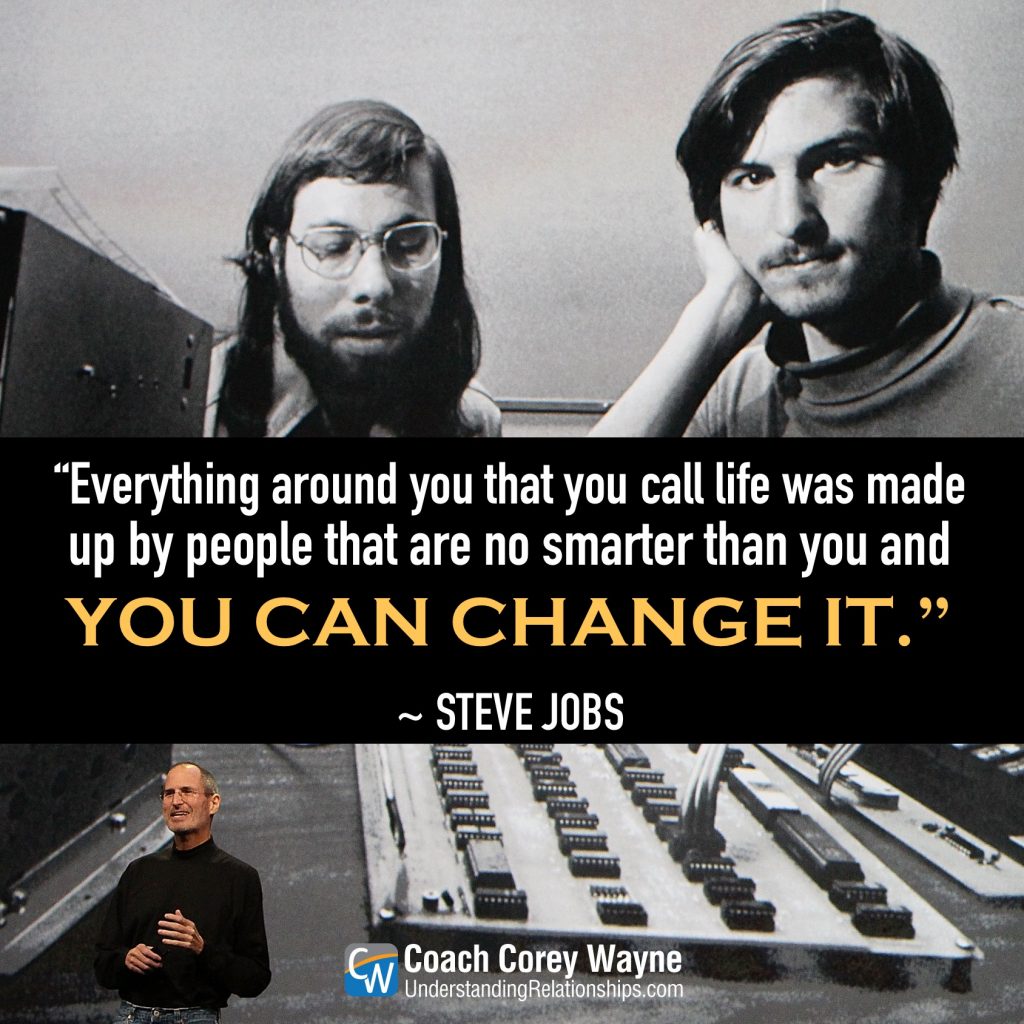
Walter Isaacson’s biography on Steve Jobs described how one of Jobs’ neighbors, a Stanford PhD named Larry Waterland, recalled seeing the first Apple computer: “Steve took me over to the garage. He had a circuit board with a chip on it, a DuMont TV set, a Panasonic cassette tape deck and a keyboard. He said, ‘This is an Apple computer.’ I said, ‘You’ve got to be joking.’ I dismissed the whole idea.”
Jobs wasn’t discouraged by his doubters or the fact he was only 21. He began working the phone — looking for investors. When he convinced several tech millionaires to invest in Apple, he broke the glass age ceiling for venture capital in Silicon Valley.
“That’s why you gotta do it young, that’s why we started Apple, we had nothing to lose, no families, no children, no houses, Woz had an old car, I had a VW van, all we had to lose was our cars, the shirts off our back, we had nothing to lose and we had everything to gain, and we figured even if we crash and burn and lose everything, the experience will have been worth 10 times the cost.” ~ Steve Jobs, 1994 Interview with the Silicon Valley Historical Association
Apple now had funding to advance Jobs and Wozniak’s vision — creating the kind of computers they believed people wanted with a user friendly graphical interface. The result was the Apple II in 1977, one of the first successful mass-produced micro-computers in the world and Apple’s first computer aimed at the consumer market.
By 1980, Apple went public in the largest stock IPO since Ford in 1956. More than 40 of Apple’s 1,000 employees became millionaires overnight. At age 25, Jobs was now worth more than $200 million.
In 1983, with Apple about to introduce its new Macintosh or “Mac” line of computers, Apple needed someone with more marketing experience to serve as CEO. Jobs targeted John Sculley, a veteran Pepsi CEO who had overseen the “Pepsi challenge” ad campaign. When Sculley declined, Jobs persisted, challenging Sculley — “Do you want to sell sugar water for the rest of your life, or do you want to come with me and change the world?”
Sculley came on as Apple’s CEO just in time for rollout of the Mac — the first computer with a graphic user interface and a mouse.
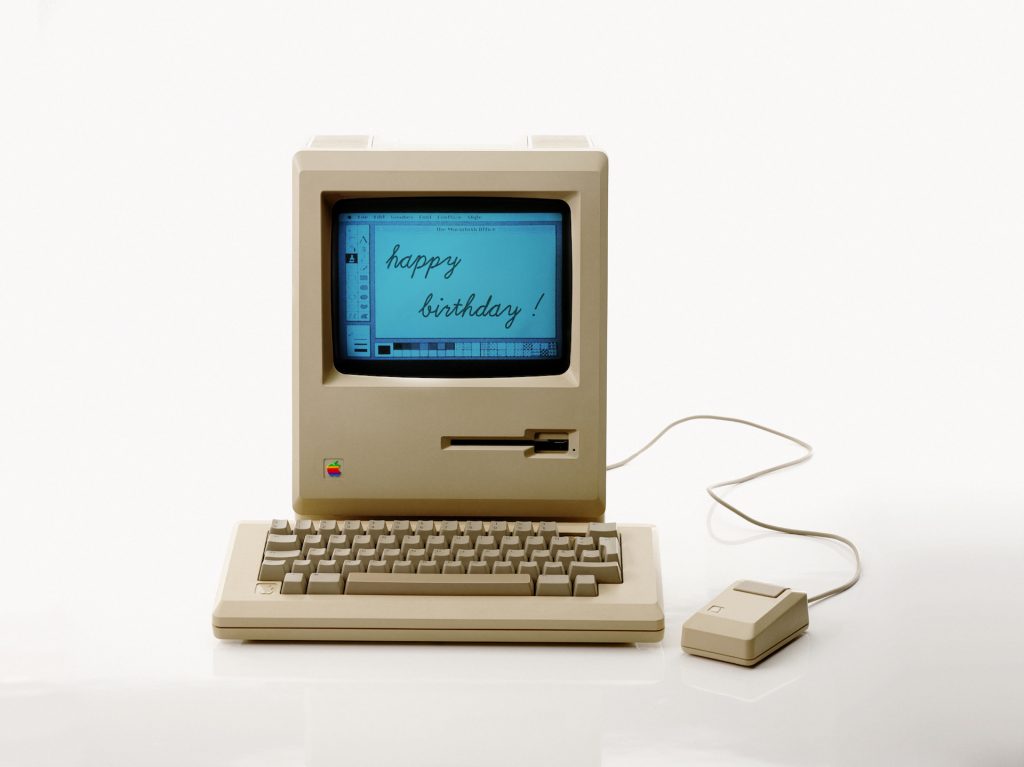
The Mac was announced to the world during the 1984 super bowl in a cinematic commercial based on George Orwell’s dystopian novel, “1984.” The message was that technology empowers the people, and the Apple Macintosh was going to “show people why 1984 won’t be like 1984.” The spot aired just once during the game, but became one of the most iconic commercials of all time.
“I’m convinced that about half of what separates successful entrepreneurs from the non-successful ones is pure perseverance.” ~ Steve Jobs
Eventually, Jobs and Sculley clashed over the company’s direction. The problem — Jobs was so innovative that other Apple executives thought he was disrupting the company. Jobs was managing the Mac division and Apple’s Board wanted Sculley to “contain” him. A power struggle ensued — but rather than submit to Sculley’s oversight — which Jobs thought would limit innovation — Jobs tried to oust him.
“Your work is going to fill a large part of your life, and the only way to be truly satisfied is to do what you believe is great work. And the only way to do great work is to love what you do. If you haven’t found it yet, keep looking. And don’t settle. As with all matters of the heart, you’ll know when you find it.” ~ Steve Jobs
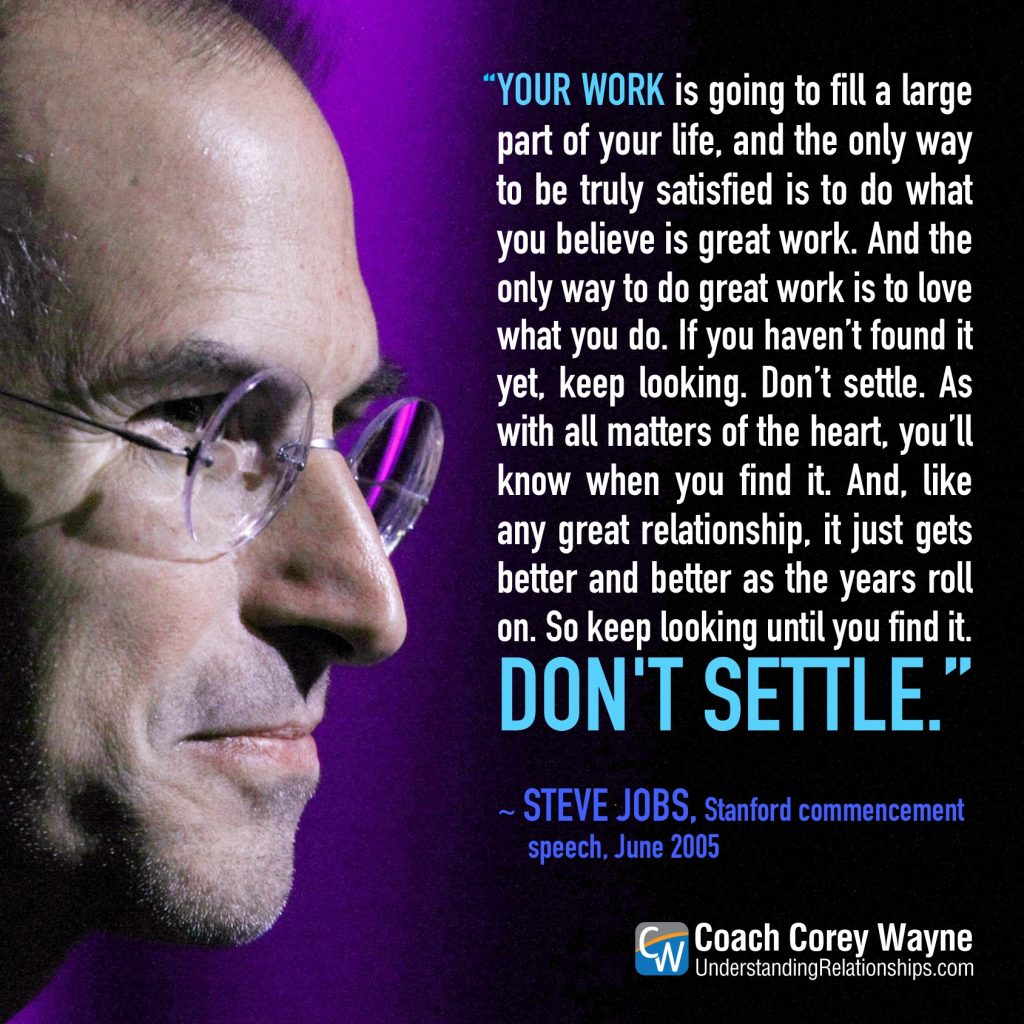
The Mac’s slow sales gave Sculley a chance to turn the tables. He won the Board’s confidence and got Jobs demoted and ostracized within his own company. When Jobs was forced out, it was a low point in his life.
“Sometimes life is going to hit you in the head with a brick. Don’t lose faith.” ~ Steve Jobs
At the age of 30, Jobs had been forced out of the company he founded, and now had to figure out what to do with the rest of his life.
Jobs felt Sculley had launched a coup and that the people he had trusted most had betrayed him, but he refused to let it hold him back. He still loved what he did and decided to start a new company, NeXT Computer, developing hardware and software for the academic world.
“Getting fired from Apple was the best thing that could have ever happened to me. The heaviness of being successful was replaced by the lightness of being a beginner again. Less sure about everything, it freed me to enter one of the most creative periods of my life.” ~ Steve Jobs
NeXT’s products were innovative, but priced too high for the market. After only a year in business, the company was running out of cash when Jobs scored a $20M investment from Texas billionaire, Ross Perot. The cash infusion let Jobs continue to innovate, developing technology that would be used to create pioneering PC video game engines, a food delivery application using geolocation, and a model for developing web applications that would inspire the Apple store and iTunes store years later.
“Sometimes when you innovate, you make mistakes. It is best to admit them quickly, and get on with improving your other innovations.” ~ Steve Jobs
In 1986, Jobs bought Pixar, the computer graphics division of Lucasfilm, the production company of Star Wars creator, George Lucas. To show off Pixar’s technology, the company had created a short film in 1983 that featured a computer-animated lamp. The film won an academy award, but Pixar was struggling to make money.
Jobs kept bailing Pixar out with his own money because he knew Pixar had great technology. He just had to figure out the right business model to make a profit and stay in business. After much trial and error, Jobs focused Pixar on building the tools to create feature length computer animated films.
When Jobs approached Disney with the proposition, Pixar scored a three film production deal with Disney. Pixar’s first feature, Toy Story became a record-setting global blockbuster and changed animation forever. A few weeks later, Pixar went public and Jobs’ investment returned billions.
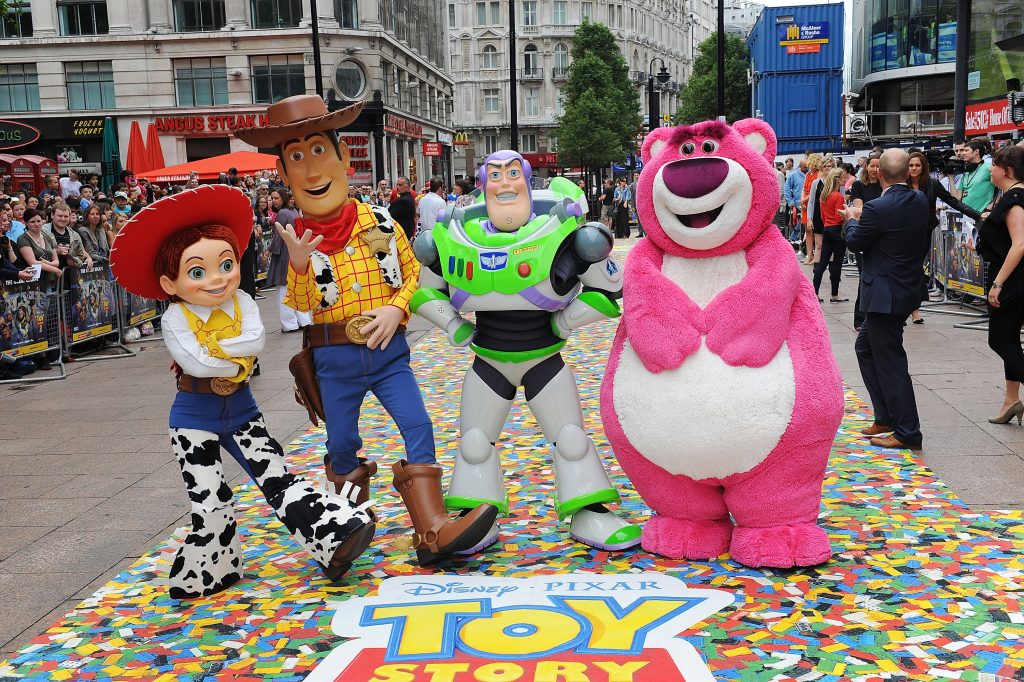
Pixar had finally achieved success, but it had been 10 years in the making and clouded with doubt the whole time. Just as important for Jobs, his experience with Pixar humbled him and made him more empathetic, setting him on the path to creating great new products when he eventually returned to Apple.
“For the past 33 years, I have looked in the mirror every morning and asked myself: ‘If today were the last day of my life, would I want to do what I am about to do today?’ And whenever the answer has been ‘No’ for too many days in a row, I know I need to change something.” ~ Steve Jobs
In his 1994 interview with the Silicon Valley Historical Association, Jobs explained what inspired him: “When you grow up you tend to get told the world is the way it is and your job is just to live your life inside the world. Try not to bash into the walls too much. Try to have a nice family life, have fun, save a little money. That’s a very limited life. Life can be much broader once you discover one simple fact, and that is – everything around you that you call life, was made up by people that were no smarter than you. And you can change it, you can influence it, you can build your own things that other people can use. The minute that you understand that you can poke life and actually something will, you know if you push in, something will pop out the other side, that you can change it, you can mold it. That’s maybe the most important thing. It’s to shake off this erroneous notion that life is there and you’re just gonna live in it, versus embrace it, change it, improve it, make your mark upon it. I think that’s very important, and however you learn that, once you learn it, you’ll want to change life and make it better, cause it’s kind of messed up, in a lot of ways. Once you learn that, you’ll never be the same again.”
In 1997, Apple’s attempts to upgrade the Mac operating system were failing. Without Jobs, innovation had stalled and Apple was 90 days from bankruptcy. Apple begged Jobs to come back, agreeing to buy NeXT for $429M, both to acquire its operating system and bring Jobs back in an advisory capacity to help guide the company.
Jobs’ time with Pixar had taught him to be a better listener. Now he asked the original Apple employees why they were still working there. They told him it was because they still believed in what Apple was doing and what the company originally stood for. Jobs summoned Apple’s top staff to an early morning meeting and forced them to acknowledge what was wrong. As Jobs would tell them, “the products sucked, they didn’t have any sex anymore.”
Jobs was right. Apple had stopped making products that people desired. His new outlook helped Apple scrap what wasn’t working and usher in a new line of products under the “Think Different” campaign, with Apple tying its brand to iconic figures from the 20th century such as Einstein, Picasso, Dylan, Lennon, Martin Luther King, Jr. and Gandhi.
“What is Apple, after all? Apple is about people who think ‘outside the box,’ people who want to use computers to help them change the world, to help them create things that make a difference, and not just to get a job done.” ~ Steve Jobs
With the success of the “Think Different” campaign, Jobs set out to revolutionize the music business. In 2001, Apple launched its first iPod MP3 player that could hold 1000 songs and was 30 times faster than any other MP3 player on the market.
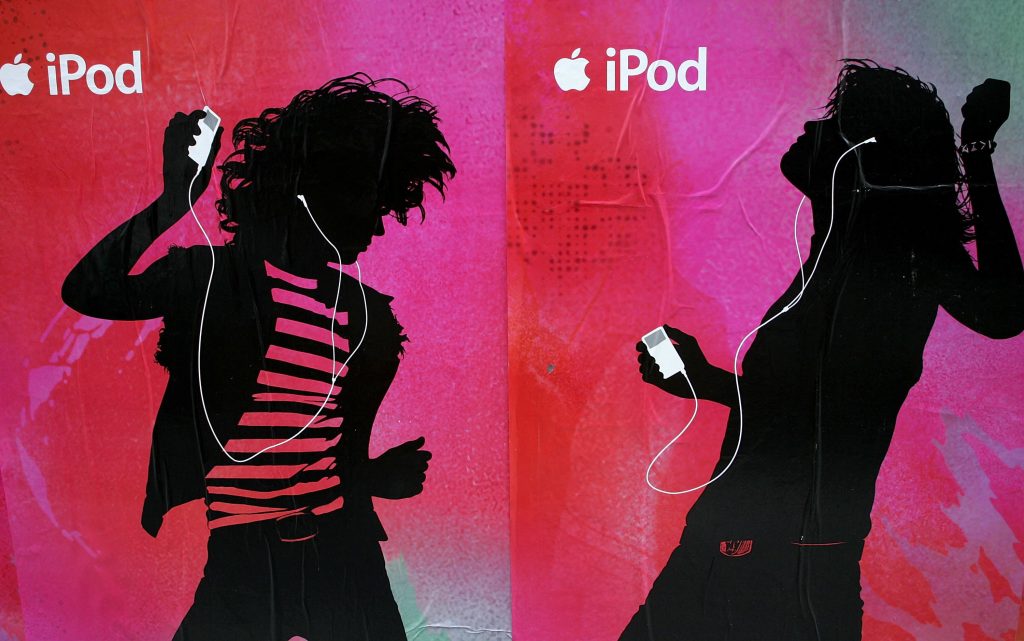
“Music’s been around forever, it will always be around. This is not a speculative market. And because it’s part of everyone’s life, it’s a very large market all around the world. It knows no boundaries.” ~ Steve Jobs
In 2003, at age 48, Jobs faced his greatest challenge. He was diagnosed with a rare form of pancreatic cancer. After surgery to remove the tumor, doctors gave him a good prospect for recovery, but the illness reminded Jobs of his own mortality and would push him to new heights of product development.
“Remembering that you are going to die is the best way I know to avoid the trap of thinking you have something to lose. You are already naked. There is no reason not to follow your heart.” ~ Steve Jobs
By 2004, Pixar had 5 blockbusters under its belt with Toy Story, A Bug’s Life, Toy Story 2, Monsters, Inc and Finding Nemo. Attempts to negotiate a new deal between Jobs and Disney CEO, Michael Eisner broke down with Jobs vowing never to do business with Disney again. But in 2005, Eisner was forced out and replaced by Robert Iger, who quickly worked to restore relations with Pixar. The result, Disney agreed to buy Pixar for $7.4 billion in 2006, making Jobs Disney’s largest shareholder. Now Jobs took on responsibility for running both Apple and Pixar. In this dual role, he would guide both companies to even greater heights, but run himself ragged in the process.
“I’ve always been attracted to the more revolutionary changes. I don’t know why. Because they’re harder. They’re much more stressful emotionally. And you usually go through a period where everybody tells you that you’ve completely failed.” ~ Steve Jobs
At Apple, Jobs added video content to iTunes in 2006, to do the same thing for video he’d done for music. At Pixar, a new franchise was created with release of the first Cars movie. But in public appearances, Jobs was noticeably gaunt and there was rampant speculation about his health. The truth was, his cancer had come back.
“Remembering you’ll be dead soon, helps make the big choices in life.” ~ Steve Jobs
In 2007, Apple TV was rolled out, allowing users to wirelessly play iTunes content on their TV sets. But Apple’s biggest success came later that year with release of the first iPhone. Touted by Jobs as “a revolutionary and magical product” five years ahead of any other cell phone, the iPhone would sell 6.1M units over its first 5 quarters and over 1.5B units to date.
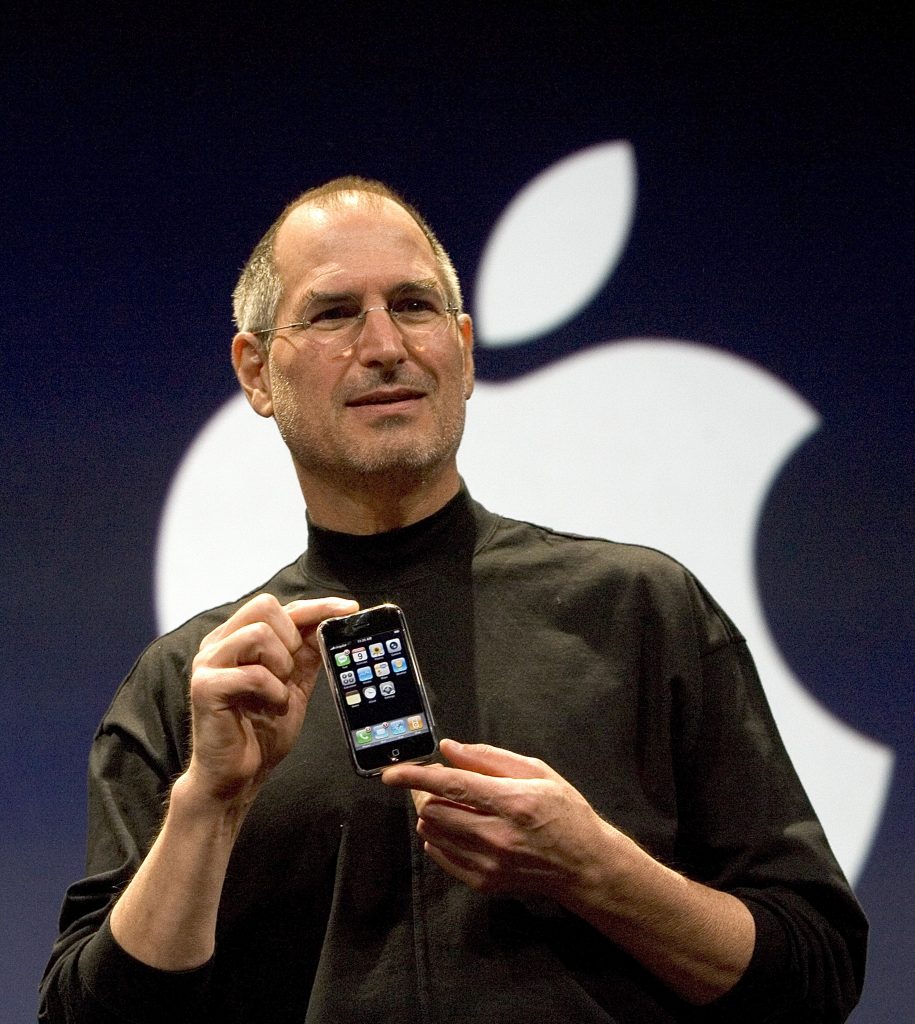
“We are all born with the ultimate pointing device — our fingers — and iPhone uses them to create the most revolutionary user interface since the mouse.” ~ Steve Jobs
Even as Jobs piled up victories with Apple and Pixar, he was losing his battle with cancer. But he still had one more great product up his sleeve. Unveiled in 2010 as Jobs recovered from a liver transplant, the iPad was another home run, selling 50M units through 2011 and over 360M to date. But by August 2011, Jobs’ health had deteriorated to the point he was forced to resign as Apple CEO.
“I have always said if there ever came a day when I could no longer meet my duties and expectations as Apple’s CEO, I would be the first to let you know. Unfortunately, that day has come… I believe Apple’s brightest and most innovative days are ahead of it. And I look forward to watching and contributing to its success in a new role.” ~ Steve Jobs
Under Jobs’ leadership, Apple had created a stunning array of revolutionary products. With Pixar, Jobs beat Disney at its own game, helping to reinvent animation and launch multiple franchises. Cancer was the one challenge his reality distortion field couldn’t overcome, but he would confront his impending death with dignity and grace.
“Your time is limited, so don’t waste it living someone else’s life. Don’t be trapped by dogma—which is living with the results of other people’s thinking. Don’t let the noise of others’ opinions drown out your own inner voice. And most important, have the courage to follow your heart and intuition. They somehow already know what you truly want to become.” ~ Steve Jobs

As Jobs neared the end, he thought about the meaning of life and his belief in God. He reflected that he was about fifty-fifty on believing in God. On the one hand, he felt there had to be more to our existence than meets the eye, but he also wondered if death might be as simple as turning off a switch.
“It’s strange to think that you accumulate all this experience, and maybe a little wisdom, and it just goes away. So I really want to believe that something survives, that maybe your consciousness endures.” ~ Steve Jobs
In October 2011, surrounded by family, Steve Jobs began his final journey. His sister, Mona Simpson, described his death: “Steve’s final words, hours earlier, were monosyllables, repeated three times. Before embarking, he’d looked at his sister Patty, then for a long time at his children, then at his life’s partner, Laurene, and then over their shoulders past them. Steve’s final words were: ‘Oh wow. Oh wow. Oh wow.’”
In 56 years of life, Steve Jobs accomplished every major goal he set for himself. He epitomized the American dream that with good ideas, hard work and ambition, anything’s possible. He was an entirely self-made man who changed the world by creating a string of “insanely great” products that elevated how people learn, communicate and consume entertainment. The obstacles and setbacks he faced might have stopped any other man. But Jobs overcame them with a radical level of persistence that enabled him to actually invent the future.
“You can’t connect the dots looking forward; you can only connect them looking backwards. So you have to trust that the dots will somehow connect in your future. You have to trust in something—your gut, destiny, life, karma, whatever. This approach has never let me down, and it has made all the difference in my life.” ~ Steve Jobs
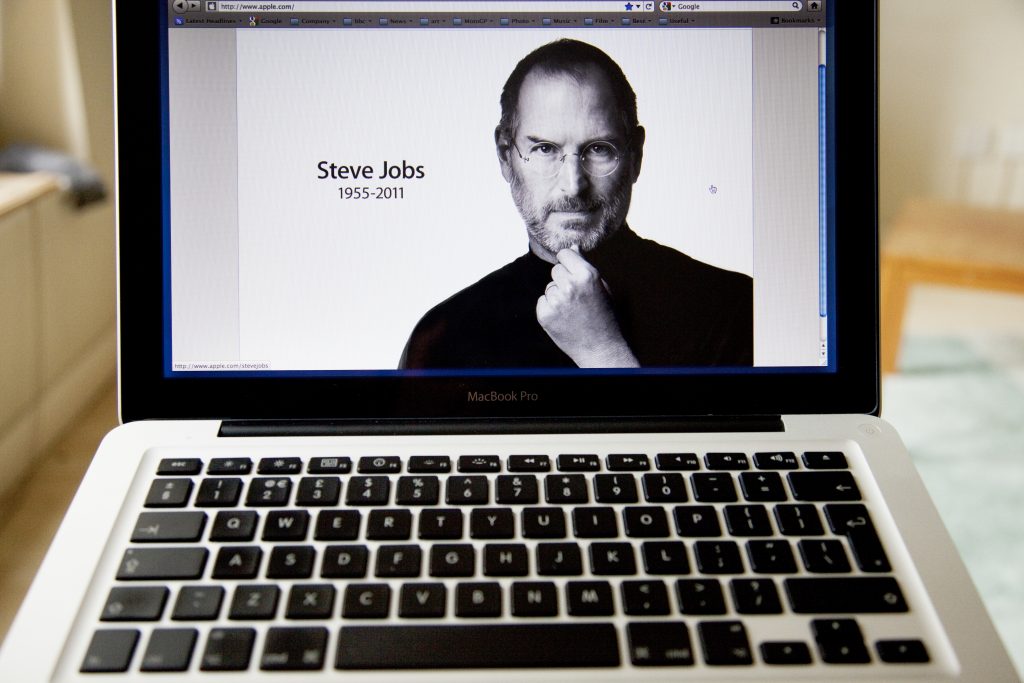
Steve Jobs was the ultimate inspiration. He showed us how simple perseverance, focus, relentless action, the ability to learn from mistakes and a commitment to the heart’s desire can make it possible to achieve our greatest goals and dreams. There will never be another Steve Jobs, but we can always learn from his example and apply his model for success to overcome our own challenges and reach our full potential. And we should remember, all great things take time and Steve Jobs showed us over and over that most great successes are at least a decade in the making.
“Being the richest man in the cemetery doesn’t matter to me. Going to bed at night saying we’ve done something wonderful… that’s what matters to me.” ~ Steve Jobs
You can learn more by reading Corey Wayne’s book, “Mastering Yourself” for FREE on his website UnderstandingRelationships.com by subscribing to the newsletter.
Get the Book “How To Be A 3% Man”
*Amazon and the Amazon logo are trademarks of Amazon.com, Inc. or its affiliates. As an Amazon Associate I earn from qualifying purchases. **Free with a new Audible.com membership
*Amazon and the Amazon logo are trademarks of Amazon.com, Inc. or its affiliates. As an Amazon Associate I earn from qualifying purchases.
How to Be a 3% Man
Paperback | $29.99
How to Be a 3% Man
Hardcover | $49.99
How to Be a 3% Man
Paperback | $29.99
How to Be a 3% Man
Hardcover | $49.99
*Amazon and the Amazon logo are trademarks of Amazon.com, Inc. or its affiliates. As an Amazon Associate I earn from qualifying purchases.
Get the Book “Mastering Yourself”
*Amazon and the Amazon logo are trademarks of Amazon.com, Inc. or its affiliates. As an Amazon Associate I earn from qualifying purchases. **Free with a new Audible.com membership
*Amazon and the Amazon logo are trademarks of Amazon.com, Inc. or its affiliates. As an Amazon Associate I earn from qualifying purchases.
Mastering Yourself
Paperback | $49.99
Mastering Yourself
Hardcover | $99.99
Mastering Yourself
Paperback | $49.99
Mastering Yourself
Hardcover | $99.99
*Amazon and the Amazon logo are trademarks of Amazon.com, Inc. or its affiliates. As an Amazon Associate I earn from qualifying purchases.
Get the Book “Quotes, Ruminations & Contemplations”
*Amazon and the Amazon logo are trademarks of Amazon.com, Inc. or its affiliates. As an Amazon Associate I earn from qualifying purchases. **Free with a new Audible.com membership
*Amazon and the Amazon logo are trademarks of Amazon.com, Inc. or its affiliates. As an Amazon Associate I earn from qualifying purchases.
Quotes, Ruminations & Contemplations
Paperback | $49.99
Quotes, Ruminations & Contemplations
Hardcover | $99.99
*Amazon and the Amazon logo are trademarks of Amazon.com, Inc. or its affiliates. As an Amazon Associate I earn from qualifying purchases.
If you have a question you would like me to consider answering in a future Video Coaching Newsletter, you can send it (3-4 paragraphs/500 words max) to this email address: [email protected]
If you feel I have added value to your life, you can show your appreciation by doing one of the following three things:
- Make a donation to my work by clicking here to donate via PayPal anytime you feel I have added significant value to your life. You tip your favorite bartender, right? How about a buck... $2... $3... $5... $10... $20... what ever YOU feel its worth, every time you feel I have given you a good tip, new knowledge or helpful insight. Please feel free to donate any amount you think is equal to the value you received from my eBook & Home Study Course (audio lessons), articles, videos, emails, newsletters, etc.
- Referring your friends and family to this website so they can start learning and improving their dating and relationship life, happiness, balance and overall success in every area of their lives too!
- Purchase a phone/Zoom (audio only) coaching session for yourself or a friend by clicking here. Download the Amazon.com Kindle version of my book to your Kindle, Smartphone, Mac or PC for only $9.99 by clicking here. Get the iBook version for $9.99 from the iBookstore by clicking here. Get the Audio Book for FREE $0.00 with an Audible.com membership by clicking here or buy it for $19.95 at Amazon.com by clicking here. Get the iTunes Audio Book for $19.95 by clicking here. That way, you'll always have it with you to reference when you need it most. Thank you for reading this message!
From my heart to yours,

Corey Wayne
Author, Speaker, Peak Performance Coach, Entrepreneur
Click Anywhere on Today’s Instagram Image Below & You’ll Be Taken To My Instagram Page. When you get to my Instagram page, click the “Follow” Button so you can follow me on Instagram. I upload several new Instagram photos per week.
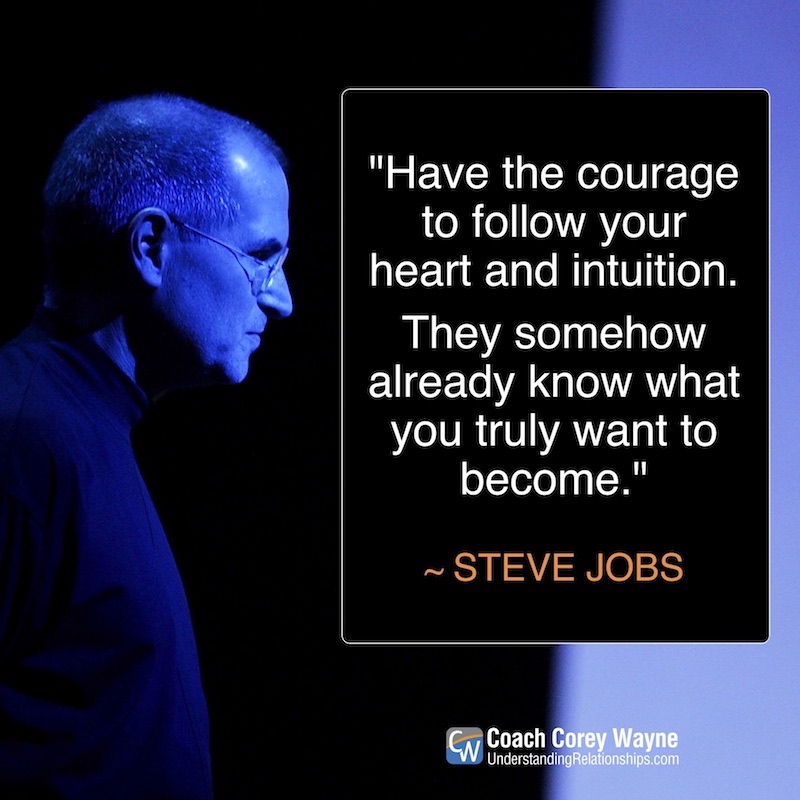



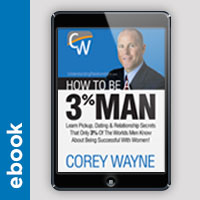





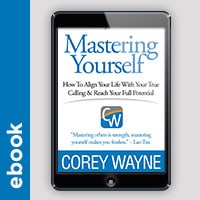
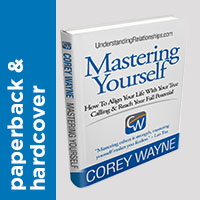


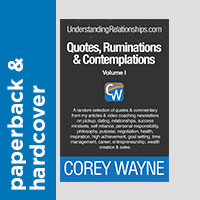
Leave A Reply